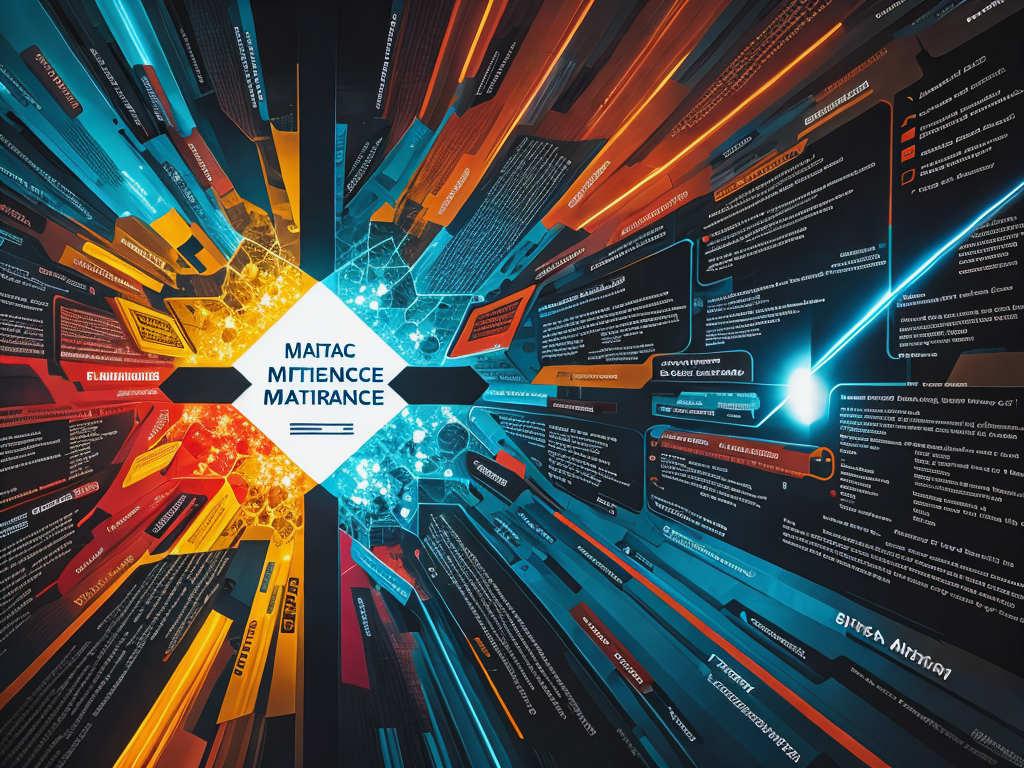Welcome back to our exploration of cutting-edge research, where today’s lineup promises to stir curiosity and provoke thought among tech enthusiasts and scholars alike. We delve into the realm of parallel computation with a paper that challenges the supremacy of sequential methods—boasting both efficiency and stability on parallel hardware. But as we turn to discuss the insights and community reactions on Hacker News, we’re met with an ironic twist: the site’s own parallel processing woes, leaving users hanging in a digital limbo.
Next, we resurrect Conway’s Game of Life, revealing new omniperiodic wonders that oscillate with periods as enigmatic as 19 and 41, only to find that the Hacker News community is caught in an oscillation of its own—between access and outage.
We then pivot to the intricate dance of knowledge distillation within transformers, where a new study not only scrutinizes performance but also gifts the world of NLP with a fresh dataset. Yet again, the irony is not lost as Hacker News struggles to disseminate these discussions amidst server struggles.
Our journey takes a synaptic leap to brain-inspired pruning in spiking neural networks, where the quest for efficiency mirrors nature itself. But as we seek Hacker News’ insights, we’re reminded that even the best servers can experience a synaptic misfire.
Lastly, we introduce GateLoop, a model championing sequence modeling through data-controlled linear recurrence, hinting at a new era of content-aware control. Alas, in a twist of fate, Hacker News’ own loop seems to be stuck in a technical glitch.
Stay with us as we unpack these research gems and navigate the comments—or lack thereof—from the Hacker News community caught in a digital snafu.
Top Papers
1) Efficient Parallelization of Ubiquitous Sequential Computation
Summary:
Parallel computation of the equation x-t = a-t*x-(t-1) + b-t is both efficient and numerically stable, surpassing sequential computation when executed on parallel hardware.
View PDF | Chat with this paper
Copy slides outline
Copy embed code
Download as Word
Efficient Parallelization of Ubiquitous Sequential Computation
Source: arxiv.org - PDF - 1,410 words - view
Introduction
• Efficient parallelization of a ubiquitous sequential computation is achieved by finding a succinct expression for computing a sequence in parallel with two prefix sums.
• The computation of n elements on n parallel processors incurs O(log n) time and O(n) space.
Sequences in Science and Engineering
• Sequences of the form x-t = a-t x-t-1 + b-t are common in science and engineering.
• These sequences can model quantities or populations that decay or grow by a varying rate between net inflows or outflows at each time step.
• They can also model investments that earn a different rate of return between net deposits or withdrawals over each time period.
Computing Vector log x-t
• The vector log x-t can be computed as a composition of two cumulative sums, each of which is parallelizable.
• Prefix sums are associative and can be efficiently computed in parallel.
• The computation of two prefix sums has the same computational complexity on n parallel processors as a single prefix sum.
Implementation in Software
• The proposed expression for computing the sequence x-t is implemented in software.
• The implementation uses the familiar log-sum-exp trick for numerical stability and delegates parallel computation to a highly-optimized implementation.
• The implementation is tested on parallel hardware.
Performance Results
• The implementation executes faster than sequential computation by a factor of log n n.
• Figure 1 shows the time to compute n elements sequentially relative to parallel computation on an Nvidia GPU.
• Each point is the mean of 30 runs.
Comparison to Blelloch's Formulation
• Blelloch’s formulation for computing first-order linear recurrences as a composition of prefix sums is more general.
• Our formulation applies only to the most common case of real numbers, with scalar sum and multiplication as the first and second operators.
• The proposed formulation is more specific and finds a succinct, numerically stable expression.
Key Takeaways
• Efficient parallelization of a ubiquitous sequential computation is achieved by finding a succinct expression for computing a sequence in parallel with two prefix sums.
• The computation of n elements on n parallel processors incurs O(log n) time and O(n) space.
• The implementation executes faster than sequential computation by a factor of log n n.
• The proposed formulation is specific to the most common case of real numbers and provides a numerically stable expression.
Hacker News:
The website Hacker News apologizes for not being able to serve requests quickly and suggests reloading the page. View on HN
- Hacker News website is experiencing high traffic or technical difficulties
- Users are unable to load or access the website
- The website suggests reloading the page to try again
- The issue seems to be with the website’s ability to handle requests quickly
- The problem may be temporary and could be resolved by trying again later

2) Conways Game of Life Omniperiodic Cellular Automata
Summary:
Conway’s Game of Life is a cellular automaton known for its complex behavior and oscillators, with specific periods of 19 and 41.
View PDF | Chat with this paper
Copy slides outline
Copy embed code
Download as Word
Conway's Game of Life: Exploring Complex Behavior and Omniperiodic Patterns
Source: arxiv.org - PDF - 9,785 words - view
Introduction to Conway's Game of Life
• Cellular automaton known for its complex behavior
• Extensively studied in various fields
• Invented by mathematician John H. Conway in 1970
Understanding Oscillators in Cellular Automata
• Oscillators are patterns that repeat after a fixed number of generations
• Omniperiodic cellular automata have oscillators of all periods
• Conway’s Game of Life is an omniperiodic cellular automaton
Discovery of Final Two Periods: 19 and 41
• Search for oscillators in Conway’s Game of Life has concluded
• Oscillators with the final two periods, 19 and 41, have been found
• Table provided as proof of Life being omniperiodic
Categorizing Patterns by Period
• Patterns in Life can be categorized by their period
• Still lifes have a period of 1, oscillators have a period of 2 or more
• Spaceships repeat their state but translate in the plane
Techniques Used to Find Oscillators
• Various techniques used, including brute force computer searches
• Low-period oscillators found through experimentation and search algorithms
• Techniques cover all periods below 43, proving Life is omniperiodic
Overview of Conway's Game of Life
• History and significance of the Game of Life
• Popular and widely used in mathematics, computer science, and artificial life
• Various software tools and programs for studying and analyzing the Game of Life
Comprehensive List of Omniperiodic Patterns
• Authors present a comprehensive list of known omniperiodic patterns
• Ranging from period 48 to period 2041
• Includes oscillators, glider shuttles, and other complex structures
Collaborative Nature of the Game of Life Community
• Mention of contributors and researchers who have made significant contributions
• Emphasis on collaboration and engagement in forums and online communities
• Encouragement for readers to further their understanding and contribute to the field
Unveiling the Complexity and Omniperiodicity of Conway's Game of Life
• Conway’s Game of Life is a cellular automaton with complex behavior
• The search for oscillators has ended with the discovery of final two periods
• Patterns in Life can be categorized by period, and Life is omniperiodic
Hacker News:
The website Hacker News is currently experiencing technical difficulties and is unable to respond to requests promptly. View on HN
- The website “Hacker News” is mentioned twice in the input text.
- The website is not able to serve requests quickly.
- The suggestion to reload is given as a possible solution.
- The input text is brief and concise.

3) Efficient Transformer Knowledge Distillation A Performance Review
Summary:
This study examines how knowledge distillation affects efficient attention transformers in pretrained language models, with a focus on introducing a new NER dataset.
View PDF | Chat with this paper
Copy slides outline
Copy embed code
Download as Word
Efficient Transformer Knowledge Distillation: A Performance Review
Source: arxiv.org - PDF - 7,537 words - view
Introduction
• Model compression and efficient attention mechanisms are the focus of this study.
Knowledge Distillation Overview
• Knowledge distillation compresses larger models into smaller models while preserving performance.
• It reduces computational requirements and allows for deployment on resource-limited hardware or in scenarios with limited internet access.
Visual: Diagram illustrating the process of knowledge distillation
Efficient Attention Models
• Efficient attention models address the limitations of transformer-based models in processing long-context sequences.
• Longformer, Big Bird, Nystromformer, and LSG are examples of efficient attention models.
• They accept longer sequences with reduced computational overhead.
Combining KD and Efficient Attention
• This study investigates the combination of knowledge distillation and efficient attention architectures.
• Performance of compressed efficient attention models using KD is evaluated on various tasks.
Visual: Comparison chart showing performance and inference times of compressed models
Preserving Performance with Reduced Inference Times
• Distilled efficient attention models preserve a significant amount of the original model’s performance.
• Inference times are reduced by up to 57.8%.
Visual: Bar chart comparing inference times of original and compressed models
Introducing GONERD Dataset
• GONERD is a new long-context Named Entity Recognition (NER) dataset introduced in this study.
• It fills a gap in long-context NER benchmarking.
Visual: Image showcasing examples from the GONERD dataset
Performance Evaluation on NER
• Knowledge distillation improves NER performance on both CoNLL-2003 and GONERD datasets.
• 97.4% of CoNLL-2003 performance is preserved.
Visual: Table comparing NER performance on different datasets
Future Research Opportunities
• Further research is needed to explore distillation methods tailored for specific efficient attention mechanisms, tasks, and architectures.
• This will help optimize performance and efficiency in different contexts.
Visual: Image representing future research opportunities
Key Takeaways
• Knowledge distillation is an effective method for creating high-performing efficient attention models with low costs.
• Efficient attention models allow for processing longer sequences with reduced computational overhead.
• The introduction of the GONERD dataset fills a gap in long-context NER benchmarking.
• Remember to explore tailored distillation methods for specific efficient attention mechanisms, tasks, and architectures.
Hacker News:
The website Hacker News is experiencing server issues and is unable to respond to requests promptly. View on HN
- The website Hacker News is mentioned multiple times
- There is an issue with serving requests quickly
- The suggestion to reload the page is given

4) Brain-Inspired Efficient Pruning in Spiking Neural Networks
Summary:
A brain-inspired pruning method enhances spiking neural networks by extracting crucial information, resulting in improved performance, feature uniformity, and structure selection.
View PDF | Chat with this paper
Copy slides outline
Copy embed code
Download as Word
Brain-Inspired Efficient Pruning in Spiking Neural Networks
Source: arxiv.org - PDF - 8,040 words - view
Introduction
• Researchers have developed a brain-inspired pruning method for spiking neural networks (SNNs) that efficiently extracts critical information while reducing computational and storage overhead.
• SNNs are attractive for deployment on devices with limited resources due to their event-driven computing characteristic.
• The proposed method uses a regeneration mechanism based on criticality to obtain critical pruned networks.
Challenges in Pruning SNNs
• Spike signals in SNNs are easily confused by disturbance and suffer from spike vanish or explosion, resulting in insufficient expression of feature information.
• The non-differentiable property of spikes necessitates the use of surrogate functions to approximate gradients, leading to gradient vanishing.
• Current state-of-the-art methods typically require extended training or iteration times to attain pruned networks, resulting in significant pruning costs.
Regeneration Mechanism Based on Criticality
• The proposed method is inspired by the critical brain hypothesis and defines a metric for neuron criticality in SNNs.
• The criticality score is related to the distance between the membrane potential and the threshold voltage of a neuron.
• The criticality-based regeneration mechanism selects neurons with higher criticality for reactivation and synapse regeneration after each pruning iteration.
Evaluation Results
• The proposed method is evaluated on VGG-16 and ResNet-19 models for both unstructured and structured pruning.
• The method achieves higher performance compared to the state-of-the-art methods with the same time overhead.
• It also achieves comparable or better performance with significant acceleration, especially on VGG-16.
Impact and Mechanisms
• The proposed method efficiently selects potential structures, improving the uniformity of features.
• It reduces overfitting during the recovery phase.
• The authors provide insights into the underlying mechanisms of their method, highlighting its effectiveness in selecting critical structures, improving feature uniformity, and reducing overfitting.
Conclusion
• The brain-inspired pruning method for SNNs efficiently extracts critical information while reducing computational and storage overhead.
• The method achieves higher performance compared to existing methods with the same time overhead and achieves comparable or better performance with significant acceleration.
• The authors provide insights into the underlying mechanisms of their method, highlighting its effectiveness in selecting critical structures, improving feature uniformity, and reducing overfitting.
Hacker News:
The website Hacker News is experiencing technical difficulties and is unable to quickly fulfill user requests. View on HN
- Hacker News website is not able to serve requests quickly
- There is a suggestion to reload the page

5) GateLoop Fully Data-Controlled Linear Recurrence for Sequence Modeling
Summary:
GateLoop is a sequence modeling model that outperforms others by maximizing linear recurrence potential, offering content-aware control and superior performance.
View PDF | Chat with this paper
Copy slides outline
Copy embed code
Download as Word
GateLoop: Maximizing Linear Recurrence Potential for Superior Sequence Modeling
Source: arxiv.org - PDF - 5,384 words - view
Introduction
• GateLoop is a foundational sequence model that utilizes fully data-controlled linear recurrence.
• It outperforms existing models for auto-regressive language modeling.
• GateLoop offers a low-cost recurrent mode and an efficient parallel mode.
Data-Controlled Gating for Content-Aware Control
• GateLoop incorporates data-controlled gating of inputs, hidden states, and outputs.
• Allows for content-aware control over forget- and retention behavior.
• Provides improved sequence modeling performance.
Outperforming Existing Models
• GateLoop is compared to various models such as S4, S4D, LRU, RetNet, Transformer, Hybrid H3, Performer, Reformer, Linear Attention, Transformer-XL, Hyena, and S5-Hyena.
• GateLoop outperforms these models in terms of test perplexity on the WikiText103 benchmark for autoregressive language modeling.
• Demonstrates superior performance capabilities.
Practical Benefits of GateLoop
• Avoids softmax-attention layers.
• Eliminates the need for tedious initialization.
• Does not require long implicit convolutions.
• Offers practical advantages over existing models.
Validating Data-Controlled State Transitions
• The synthetic Memory Horizon dataset is used to validate the advantage of data-controlled state transitions.
• GateLoop significantly outperforms a model with fixed state transitions in terms of test accuracy.
• Fully data-controlled variant maintains performance for twice as long as the fixed variant as the required memory span increases.
Structured Patterns in State Transitions
• GateLoop’s state transitions exhibit structured patterns.
• Indicates deliberate utilization of data-controlled gating and forgetting/retention of memories.
• Provides insights into the model’s functionality.
Future Work and Exploration
• Future work can explore different initialization strategies, amplitude- and phase-activations.
• Further research can focus on the interpretability of the learned state transitions.
• Opportunities for enhancing the model’s capabilities.
Conclusion
• GateLoop demonstrates the effectiveness of fully data-controlled linear recurrence for sequence modeling.
• Offers improved performance and practical advantages over existing models.
• A significant advancement in the field of sequence modeling.
GateLoop: Maximizing Linear Recurrence Potential for Superior Sequence Modeling
• GateLoop utilizes fully data-controlled linear recurrence to improve sequence modeling.
• Outperforms existing models and offers practical benefits.
• A groundbreaking model in the field of autoregressive language modeling.





